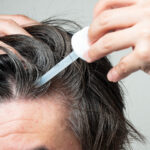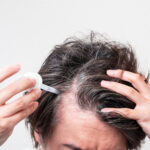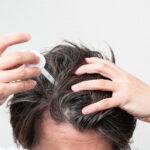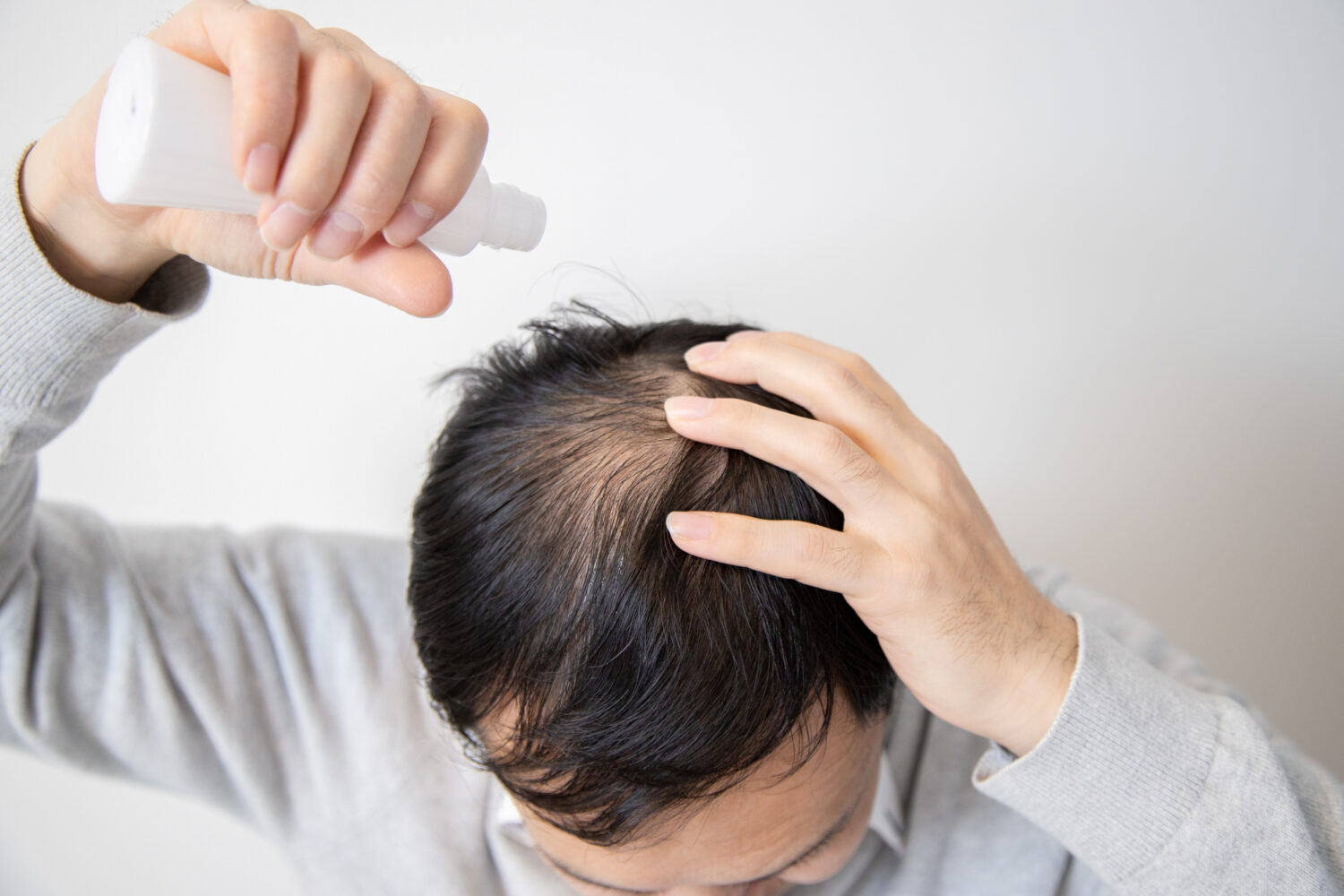
Many people may be concerned about the recurrence of AGA due to side effects or decreased efficacy after long-term use of minoxidil.
In fact, minoxidil has almost no “loss of efficacy after long-term use” phenomenon. Although it is a veteran drug that has been on the market for more than 20 years, minoxidil is the only drug that can both proliferate hair matrix cells and improve blood flow at a high level.
However, it is also a drug that varies greatly from person to person in terms of hair loss progression and aging effects. For those who continue to experience hair loss even after years of use, reviewing the method of use may be a shortcut to prevent recurrence.
This article explains the duration of use and discontinuation methods that both sustain minoxidil effects and avoid risks.
Are you looking for a treatment plan tailored to your individual symptoms? Book a free consultation with a doctor at Osaka AGA Kato Clinic to find the best treatment plan for you. Reservations can be easily made on Line.
この記事で説明する内容は?
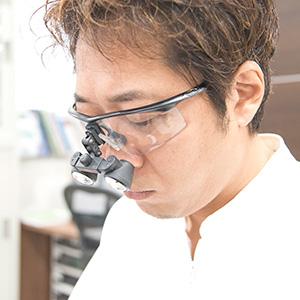
Kentaro Kato, Hospital director of Osaka AGA Kato Clinic group, specializing in comprehensive hair treatment. We specialize in cutting-edge treatments for a variety of clinically proven effective treatments for thinning hair and hair loss. Graduated from Faculty of Medicine, Kinki University in 2001 Worked at plastic surgery of Osaka Medical and Pharmaceutical University Hospital as an anesthesiologist from 2001 to 2005. Worked as a head of plastic surgery at major cosmetic surgery, Hair Transplant Department from 2005 to 2011. Opened Osaka AGA Kato Clinic in 2011. Japan Society of Plastic and Reconstructive Surgery, Regular Member. The Japanese Society for Regenerative Medicine, Regular Member. World Academy of Anti-Aging & Regenerative Medicine, Regular Member.
Will AGA recur When minoxidil is Stopped?
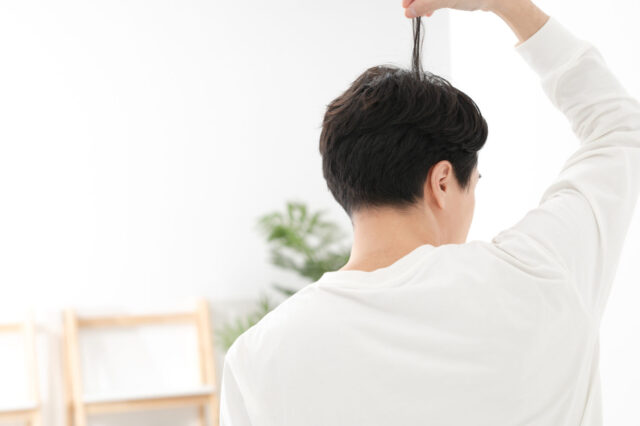
Clinical data indicate that when minoxidil is stopped after long-term use, AGA often recurs and hair loss progresses again.
Approximately 60% of those who had been using minoxidil for more than 6 months reported experiencing a recurrence and progression of hair loss within 1 year, and 80% within 2 years, indicating that recurrence occurs at a fairly high rate.
However, the time until recurrence varies greatly from person to person, with some individuals beginning to notice hair loss and thinning within 2~3 months after stopping, while others seem to be able to suppress the progression of hair loss for about a year.
The reason for the large individual differences in the effectiveness of minoxidil in suppressing the recurrence of hair loss is thought to be due to multiple factors, including the condition of the hair follicles, the pattern of progression of AGA, and genetic predisposition.
Mechanism of relapse after drug cessation
Two main processes are thought to be involved in the mechanism of recurrence when minoxidil is stopped.
Increase in DHT
The first is that minoxidil stops working, making the patient vulnerable to increases in dehydrotestosterone (DHT), the male hormone involved in AGA.
Minoxidil is a vasodilator of hair follicles, which increases the metabolism of hair follicle cells and protects them from DHT. The loss of minoxidil resumes the transition of the hair follicle to the alopecia phase due to the increase in DHT.
Weakness to DHT
Second, hair follicles in a minoxidil-dependent state are shocked when the drug supply is suddenly stopped.
Hair follicles that have become minoxidil-dependent with long-term use lose their vitality in the absence of the drug and become vulnerable to attack with DHT, making it easier for them to transition to the epilation phase in a relatively short period of time.
The combination of these two mechanisms is believed to create a situation in which the resumption and progression of hair loss is more likely to occur when minoxidil is stopped.
Effects and Characteristics of Minoxidil
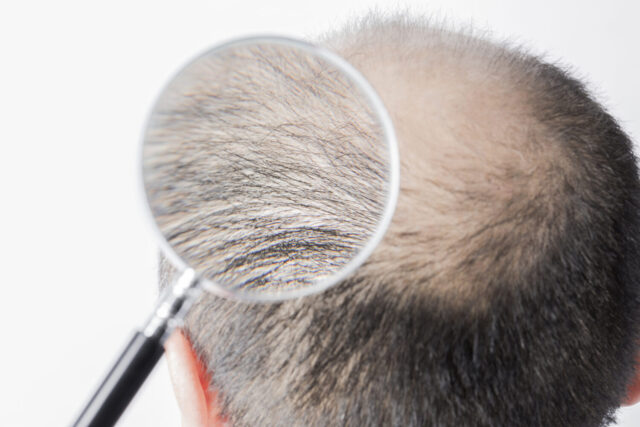
The main effects and characteristics of minoxidil are summarized below.
- Shortens the hair cycle and promotes new hair growth
- Increases blood flow to hair papilla through vasodilation
- Protects hair follicles from DHT
- Can be used over a long period of time while adjusting dosage
- Less burden on the body than oral drugs because it is a topical drug
- Highly effective for early hair loss
While minoxidil has the advantage of addressing hair loss at an early stage and low risk of side effects, it also has the property of being less effective in stopping hair loss.
In addition to topical application, minoxidil is also available as an oral drug (minoxidil tablets and minotabs). While oral administration has the advantage of maintaining a constant blood concentration, which makes it easier to sustain its effects of protecting hair matrix cells and shortening the hair cycle for a long period of time, it has the disadvantage of being more likely to cause systemic side effects than topical application.
The following article explains how to penetrate minoxidil application for better therapeutic effect.
What are the characteristics of people who have difficulty with Minoxidil?
The following characteristics are common among those who have low responsiveness to minoxidil, i.e., those who have difficulty in achieving an effect.
- Rapidly progressive hair loss
- Frontal baldness type with thinning hair extending to the top of the head
- Familial history of AGA treatment
- Persistently high testosterone levels
- Has an irregular diet and is obese
- Under a large amount of chronic stress
- Extreme lack of sleep
Thus, in addition to genetic predisposition, people with greater room for improvement in lifestyle often fail to take full advantage of the vasodilating and cell-protective effects of minoxidil.
It is recommended that patients improve their nutritional balance and stress management under the guidance of their doctors, as well as take other measures to prevent lifestyle-related diseases.
Cases in which Minoxidil should not be Stopped abruptly
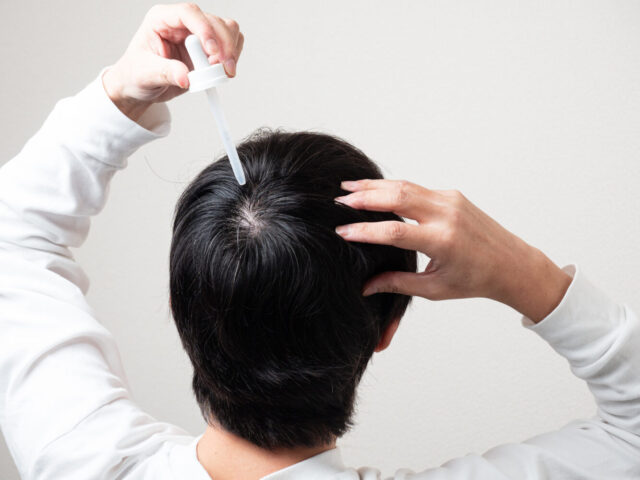
There are some cases and times when minoxidil should not be stopped.
Early stage of hair loss
If you have just started AGA treatment and are still in the early hair loss stage, you should not stop minoxidil immediately.
This is because in the early stages of hair loss, follicle cell decline is still mild and the vasodilating and cytoprotective effects of minoxidil are likely to be highly effective. Minoxidil has the advantage of being cost-effective with fewer side effects.
In many cases, hair loss control and hair growth effects begin to appear 3~6 months after the start of administration, and if the treatment is stopped during this period, the subsequent improvement effects may be lost.
Less than 6 months from start of treatment
Even if minoxidil treatment has only been started for a short period of time (less than 6 months), it is advisable to continue the treatment without abruptly discontinuing it.
Since it takes 3~6 months for the effect to appear in most people, early discontinuation within 6 months is a high risk of impairing subsequent improvement.
In particular, those with hair loss that progresses more rapidly and is stronger need to receive minoxidil’s protective effect, even if only temporarily, and it is advisable to continue treatment for at least one year.
I want to change to propecia or dutasteride.
If you wish to switch to an oral medication such as Propecia (finasteride) or Zagallo (dutasteride) instead of minoxidil, you should also reduce the dose of minoxidil in stages, rather than discontinue it abruptly.
Propecia (finasteride) inhibits the male hormone DHT, and when used in combination with minoxidil, it is expected to synergistically prevent hair loss and promote hairline security.
On the other hand, dutasteride contained in Zagarlo is an even stronger DHT blocker and is considered to be highly effective for hair loss, especially in the frontal area. In combination with minoxidil, it is characterized by its ability to suppress the speed of hair loss.
Many people cannot prevent early hair loss symptoms with oral medication alone, and the vasodilating and mutually complementary effects of topical minoxidil are essential for preventing hair loss.
Therefore, after starting oral medication such as Propecia or Dutasteride, it should be used in combination with minoxidil for at least 3~6 months, and then the ideal process is to gradually reduce the dosage.
Keep in mind that you should switch to other drugs at a slower pace, while regularly consulting with your doctor.
How to Stop Minoxidil While Preventing AGA Recurrence

Even when stopping minoxidil, there are ways to do so while preventing the recurrence of AGA.
Concomitant use with oral medications
One effective way to reduce the risk of recurrence when stopping minoxidil is to use it in combination with oral medications such as finasteride or dutasteride.
These medications inhibit DHT, the causative agent of AGA, and thus prevent DHT increase after stopping minoxidil, reducing follicle damage after recurrence.
In fact, a study comparing minoxidil alone with minoxidil combined with minoxidil showed that the rate of hair loss progression after 12 months was about 20% lower in the combined group, confirming a significant inhibitory effect on recurrence.
Therefore, it is clear that the combination of minoxidil and finasteride or dutasteride is very effective in preventing AGA recurrence after discontinuation of minoxidil.
Weight loss for peak hair loss
Many AGA patients experience an annual cyclical increase or decrease in the amount of hair loss. For example, hair loss increases more than usual in early fall and during the year-end and New Year holidays.
Around 2 to 3 months prior to the peak of this hair loss, the amount of minoxidil used can be reduced in stages to enable smooth discontinuation.
Specifically, a person who normally uses 1 mL twice a day will reduce the dosage in the following process starting around May, when the peak of hair loss is approaching.
- May: 0.8 mL each twice daily
- June: 0.6 mL each, twice daily
- July:once a day, 0.5 mL each
- August:once a day, 0.3 mL each
- September:Discontinue use
(The above is just an example.)
Gradually reducing the dose during the period before hair loss is at its highest will slow the worsening of hair loss symptoms and make it easier for minoxidil-dependent follicles to regain their physical condition.
By adopting this “peak hair loss reduction method” in response to your doctor’s advice, you can achieve discontinuation while lowering the risk of recurrence.
Periodic checkups by a doctor
When stopping minoxidil and thereafter, it is important to continue to see a doctor specializing in hair loss on a regular basis.
The doctor will diagnose hair loss and hair follicle condition from a professional perspective and advise you on the optimal timing and method of discontinuation and subsequent care.
During the consultation, the amount and cycle of hair loss and the condition of the hair follicle will be evaluated. Based on this data, they will make predictions for the future, determine necessary treatment changes, and suggest self-care until the next visit.
For example, if there is an increase in hair loss or a strong inflammatory response in the hair follicle, the doctor will suggest resuming the treatment, and if the hair loss pattern does not worsen, the doctor will determine that the patient can continue with the reduced dosage.
What AGA measures are taken after stopping minoxidil?
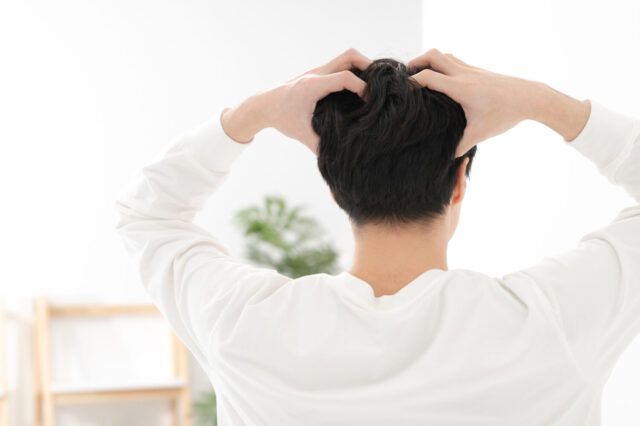
This section describes the recommended methods of AGA control after stopping minoxidil.
Finasteride (Propecia)
Even when minoxidil is stopped, the use of finasteride (Propecia) alone can be expected to prevent recurrence of AGA to some extent.
This is because finasteride suppresses the male hormone DHT, thereby reducing the substance itself that causes hair loss.
However, it does not have the direct effect of shortening the hair cycle or protecting hair follicle cells as minoxidil does, so finasteride alone has limited ability to suppress hair regrowth.
Especially in older hair follicles with more advanced hair loss, it is desirable to return to the use of the combination as soon as possible because of the regenerative limitations that DHT suppression alone cannot address.
Finasteride tends to remain effective when used over a long period of time. This is because it is able to continue to preserve the pool of generating cells and to a significant degree improve the hair follicle microenvironment in a sustained manner.
The hair matrix cells that survive DHT suppression continue to maintain their proliferative capacity, and the continuation of this stem cell-based regeneration cycle leads to sustained efficacy.
In addition, healthy hair follicles with low DHT damage can remain relatively robust even after administration is discontinued, which means that they can retain some resistance to hair loss recurrence.
Laser treatment
There is also the option of using lasers as a countermeasure against AGA recurrence after stopping minoxidil.
Low-power lasers, which have become popular in recent years, have been confirmed to be effective against AGA and are believed to suppress hair loss by activating cells with light energy. The irradiated laser activates intracellular ATP production, promotes hair matrix cell division, and shortens the hair cycle.
The advantage is that it can be easily continued as an alternative to minoxidil because of its low frequency of use and low risk of side effects.
It is a useful option to consider under the judgment of a doctor.
Review of Lifestyle
After discontinuing minoxidil, one important recurrence prevention measure is to be proactive in improving lifestyle habits.
Stress management and review of diet and exercise habits are effective in improving AGA itself, and also have the effect of self-care, such as increasing resistance to hair follicles, which can help reduce recurrence.
The key is to moderate the amount of fat and sugar, and actively incorporate foods that increase blood circulation and hair matrix cell activity. Moderate aerobic exercise to relieve stress and improve metabolism.
Daily practices such as refraining from washing hair with hot water and using scalp massage to promote blood circulation are also recommended. It is important to complement medical care and maintain a stable condition by taking a lifestyle approach.
Scalp Massages
After discontinuation of minoxidil, it is recommended to make a habit of scalp massage, which can be done at home. Stimulation of the scalp and stimulation of blood circulation lead to activation of hair follicles, which can be expected to prevent hair loss and improve hair growth.
To be specific, apply an appropriate amount of moisturizing cream to the scalp and massage the entire scalp with your fingertips in a circular motion. Try to stimulate the thinning hair area in a focused manner.
Incorporating a 5-minute scalp massage 2~3 times a week before bedtime into your bedtime routine will help reduce the risk of hair loss recurrence.
Regular checkups at an AGA clinic
Regular visits to an AGA doctor, even after discontinuation of minoxidil use, will allow for appropriate action, including evaluation of hair loss and follicular condition and early detection of signs of high risk of recurrence.
They will also be able to determine whether or not medication is needed and advise on the selection of generic drugs. The care of a doctor can be of great help in preventing the recurrence of hair loss.
Conclusion
Minoxidil is a fast-acting AGA treatment, but carries the risk of hair loss recurrence after discontinuation. The more rapidly the pattern, especially in the frontal area, and the more rapidly it progresses, the more caution should be exercised. Combination use with finasteride and scalp care is important to prevent recurrence. Tapering off and discontinuation at peak times is recommended.
Regular checkups with a doctor are recommended for early detection and guidance on lifestyle modifications.
While minoxidil is highly effective immediately, it is prone to recurrence when its use is discontinued. However, the recurrence can be relatively prevented by combining it with propecia or discontinuing weight loss. The post-graduation care method is also well-developed, so you can use it with peace of mind.
Don’t put up with thinning hair problems anymore. You can easily make an appointment on Line.


